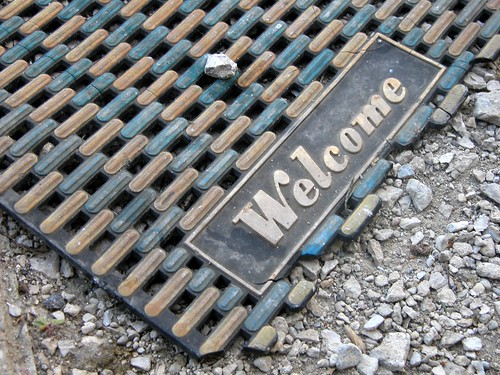
In the rush to engage on Haiti, a lot of well-meaning groups are jumping in to help. Some are brand new, and some have never worked on a disaster like this before. Most of these groups are going to be useless. Some will actually do harm to themselves or others. A tiny minority will have a positive impact. I wish those odds were better, but they’re not.
I’ve seen three bad ideas for helping in Haiti floating around recently. I don’t want to single anyone out for criticism – after all, everyone is trying to do good here. But in this case, the culture of nice may be letting bad programs hurt people. I need to say something.
Bad idea #1 – 50,000 Shoes The idea is to donate 50,000 shoes in 50 days for Haiti. They are asking for a $5 donation for each pair of shoes. The problem with this idea is that it’s based on an assumption – that lots and lots of shoes are what Haitians need right now. What if they need clothes? Or food? Or water purifiers? Should they sell their new shoes and use the money to buy those things? Has anyone done an assessment to find out if shoes are needed? To decide what kind of shoes are needed?
The shoes could end up wasted and useless, absorbing people’s donations without providing any benefit. They could clog supply lines that also bring in desperately needed medicines. They could keep the local shoe suppliers from rebounding after the earthquake, and if badly chosen for the Haitian climate they can give people disgusting fungus.
This is almost a good idea. The time-delimited fundraising with easy to remember numbers will drive people to donate, and they’ve got celebrity endorsements that are raising their profile.
How it could be a good idea – call it $500,000 in 50 days instead of 50,000 shoes. That would double their fundraising goal (since they are trying to provide $250,000 of shoes) but I think they could pull it off, considering their level of media attention. Then they could make a high profile donation, including a ceremony with one of those oversize checks on poster board to Partners in Health.
Bad idea #2 – Flight to Crisis Volunteer doctors and nurses are banding together to charter a flight to Haiti and help with medical care. It’s brave, it’s scrappy, and it shows amazing initiative. It’s also a horrible idea. The people don’t seem to have any plan from bringing in their own supplies and haven’t set up a place to stay in Haiti. They don’t have a hospital to work out of or any background in responding to this kind of disaster. This is exactly the kind of misguided effort I was afraid we’d see, because Haiti is close enough to the US to make it possible. For more information on why this is such a bad idea, read this account of another group of health care providers that chartered a plane.
[Edited to add: please see comments below for a response from Flight to Crisis. They are better organized than their Idealist.org page makes them look.]
How it could be a good idea – in about three months, when rebuilding gets serious and Haitians have time to think, this group could choose a Haitian hospital to partner with. They could fundraise to help it rebuild, and donate supplies and equipment. They could visit the hospital quarterly to train the providers there as needed, and make sure that the equipment is in good shape and well maintained.
Bad Idea #3 – The Global Volunteer Network Haiti Project This project, which volunteers pay to support, is seeking people to volunteer for the following projects: working with children, teaching, health/medical efforts, building and construction, counseling, and business development. They say that volunteer trips can run from one week long to six months. This list seems designed to please volunteers, not meet the needs of people in Haiti. You already know that I am not a supporter of trips where you pay to volunteer.
This, however, is even worse than usual. This isn’t just useless feel-goodery for rich people. This will hurt people in Haiti. Traumatized children should not be making emotional attachments to volunteers who will be gone in six months. Volunteer labor for building and construction will keep Haitians from getting paid jobs to do the work themselves. And no outsider volunteer has any business providing counseling; counseling needs a background in local culture and context that a visitor won’t have.
How it could be a good idea – It’s almost impossible to rescue this one, but short-term volunteers could offer brief, targeted English or French classes to Haitians who needed them. They could cover technical topics that local teachers might not be able to offer. Not in a week. There really isn’t anything useful you can do in a week. But two months might work. It really wouldn’t qualify as disaster response – or rebuilding – but it would at least be useful.
For more information on how to help in Haiti, take a look at my Aid Watch post.
*********
Photo credit: simminch






